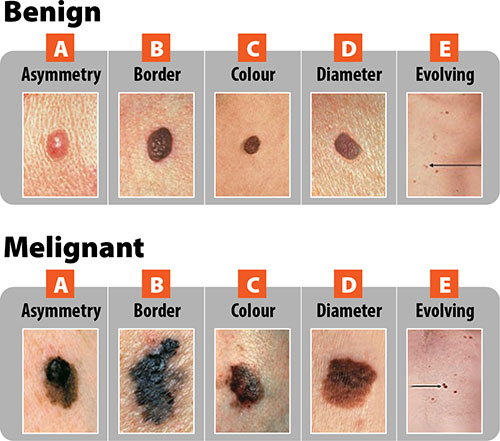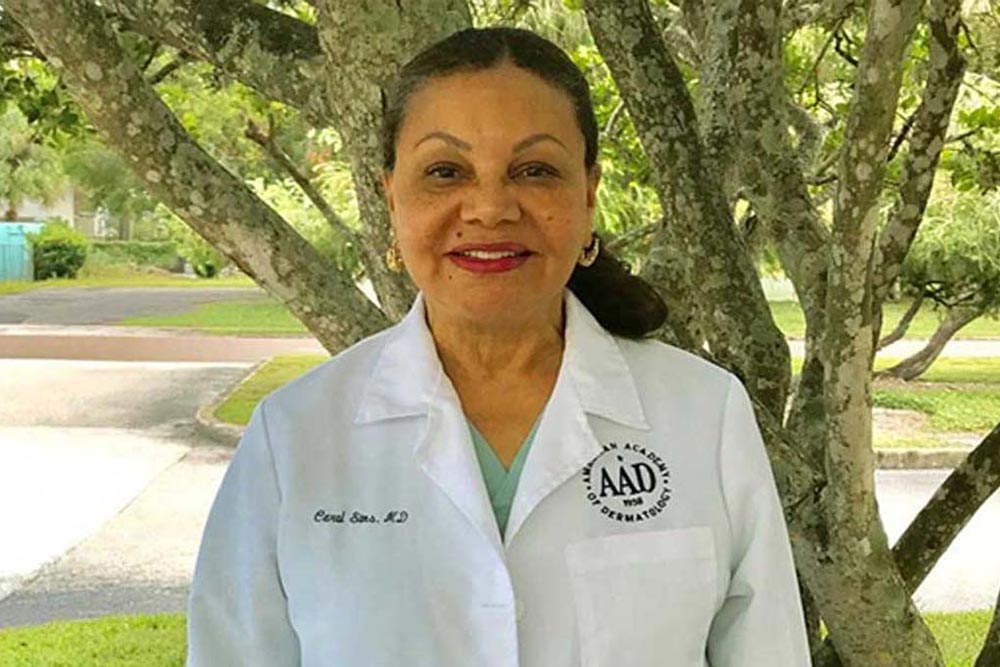Cancer Detection
Skin cancer is the most common form of cancer in the United States. Over the past three decades, more people have had a type of skin cancer appear on their body than all other types of cancers combined.
The Breakdown
The Three Most Common Types of Skin Cancer
Melanoma
One of the most deadly forms of skin cancer. It can come from a mole that has become malignant. It can grow very quickly and can be life-threatening in as little as six weeks.
This type of skin cancer is treatable when diagnosed early enough.
Basal Cell Carcinoma
This is the most common type of skin cancer, yet the least dangerous form of skin cancer when diagnosed early. It appears as a pearly, pinkish bump on the face or body. It can look like an open sore with red patches, little bumps or growths that easily bleed or never heal.
Squamous Cell Carcinoma
The second most common type of skin cancer. It appears as a thickened, red, scaly spot or hard white scab that can easily bleed or reopen after crusting. It can spread to other parts of the body if not treated.
The above mentioned skin cancers are three of the most common and it is recommended that all people wear sun screen with an SPF of at least 30. Apply it frequently (every 2-4 hours) depending on your activities and sun exposure and schedule an appointment with your dermatologist for a full body cancer screening annually.
Other Types of Skin Cancer
There are other types of skin cancer that are rare, deadly, and aggressive like Merkle cell carcinoma, Sarcomas, Cutaneous Lymphomas, and Paget’s disease:
Skin Exams

A yearly full skin exam, a mole check, by a Dermatologist is recommended for all person’s 40 yrs old and up and people with sun damaged skin, many moles, and other skin conditions should start younger.
Self-examinations of the skin can be performed regularly to look for skin growths, any new moles or existing ones that have changed color, increased in size, thickness, and/or texture.
Other things to look for include spots or sores that continue to itch, scab, hurt or bleed, and sores that do not heal within three weeks.
Here is what you should pay attention to when doing a self-examination at home:
Cancer Screenings
When you are at your dermatologist for cancer screening, he or she will ask you for your medical history, followed by a head-to-toe skin exam. Dermatologists are trained to diagnose, manage, and treat skin cancers.
During this time, it would be recommended that you ask questions about what to look for when you perform self-exams. Any spots that the doctor suspects to be cancerous will be biopsied. When skin tissue is biopsied, it is sent to a lab where a pathologist examines the sample, then either refutes or confirms the dermatologist’s suspicions.
Sun and UV Safety
Here are some other ways you can to reduce the chances of getting skin cancer:
Avoidance
Try to avoid going outdoors between the hours of 10 AM to 4 PM, when the sun’s UV rays are at their strongest. If you have to be outdoors, try to seek shade instead of being under direct sunlight.
Sunscreen
Sunscreens are made to protect your skin from the sun’s harmful rays. Make sure you wear sunscreen with SPF 15 or higher every day, regardless if you are going to leave your house or not. Remember to re-apply every couple of hours too.
Clothing
When you go out into the sun, cover up your skin with clothing, hats, and sunglasses. Long-sleeved shirts, wide-brimmed hats and UV-blocking sunglasses can greatly mitigate the effect of the UV rays on your skin.
Artificial UV Protection
Tanning beds don’t offer a safe alternative to sunlight; they raise the risk for skin cancers. According to Skincancer.org, you are likely to have an 75% increased risk of developing melanoma from using tanning booths.
National Skin Cancer Awareness Month
May is National Skin Cancer Awareness Month. It is a good time to educate people about the facts and figures surrounding skin cancer. This month allows dermatology professionals to inform and warn about the dangers and potentially save lives.
We have created a virtual flip book about skin cancer facts, including the outlook of the disease, risks, and what you can do to protect yourself. Use your mobile device to scan the QR code below or click on the button to view our National Skin Cancer Awareness Month virtual flip book.

Online Resources
Skin Cancer
Foundation
National Council
on Skin Cancer Prevention
American Academy
of Dermatology
Center for Disease Control
What else would you like to do?
See which conditions of the skin, hair and nails we specialize in.
Get to know Dr. Carol Sims-Robertson, including her history, her education and her specializations.
Our blog is full of skincare tips, product reviews and other important information you need.






